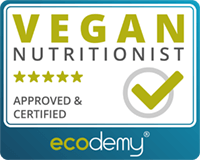What you might not have thought about before. Where from and how does the food come to us?
Every time you enter a supermarket, you are met with a huge variety of fruits, vegetables, roots and herbs. That is thanks to food imports from pretty much all over the world, from countries with different climates and soil fertility. So we literally have access to any food we wish at any given time. That’s cool, right?
…What about if we think that food is being transported by ships, planes, trains, trucks…?All of the above have a fair share in the CO2 emissions that are being discharged into the air, with trucks and aircraft being top of the list.

Visit activeplantbased for professional help and plant-based nutrition training.
Shopping regional food
It is obviously preferred to opt for regional foods since their transportation to their final selling destination is often short/minimal. Note, however, that the above does not automatically mean that the CO2 emissions will drop since those or some of those products might be grown in greenhouses, whose emissions are significantly high and ecologically damaging.
An example is strawberries and apples. They are usually harvested way before their peak season and need to go under specific conditions of cool and then warm temperatures before they are deemed ready to be sold in the market. That process will most likely require further transfers, which override the superiority of them being regional.
Check how much produce has travelled
It is always good to do some research and educate ourselves on that topic since we cannot actually see how much a product has travelled or all the processes it’s been through to appear in our local market.
There are, of course, other factors that have a role in our final decision on whether to buy food or not, the top ones being the price, taste and availability.
You should be able to find information on where they were produced on pretty much every back side of the packaging. Be attentive to the exact wording, as some might not be clear for marketing reasons. A common phrase is, for example, packaged in the EU. That does not mean the product came from the EU.
Ideally, you can shop from local food markets to both support your local farmers and be sure about where your produce is coming from.
What about seasonal food?
Seasonal food refers to food that grows in outside spaces according to their current climate, ripens and is harvested during its peak season.
Did you know that seasonal food might even taste better and have a larger nutritional value than non-seasonal food? This is because the more naturally produce is grown, the richer the flavour becomes and its nutritional value than non-seasonal food that has been stored for an extended period of time.
Always remember that you can easily grow your own produce given that you have some space the sun sees and soil.
Health aspects of eating seasonally
Seasonal fruit and veggies are generally more nutrient-dense than non-seasonal produce, as it has not been stored for extended periods of time before reaching your plate.
As mentioned above, it also usually has a more intense flavour, which can make it more enjoyable to eat and potentially reduce your need to add unhealthy seasonings or sauces. It provides more satisfaction.
Generally speaking, eating seasonal produce can help to reduce your exposure to pesticides. Seasonal produce is typically fresher, and since it has not been stored for extended periods of time which means it has less of a chance of being exposed to pesticides. If you are able to buy organic when possible, this can further reduce your exposure to pesticides.
How to shop and cook seasonally
Here are some simple tips on how to shop and cook fresh seasonal produce
Shopping
- Research what fruits and vegetables are in season for your area.
- Look for the most vibrant and fresh-looking produce when shopping.
- Talk to local farmers and ask them about their seasonal offerings. That way, you can also get to know more about your food, where it comes from and how.
- Try to buy only what you need and store it properly so it doesn’t go to waste.
- Shop at farmers’ markets or sign up for a Community Supported Agriculture box (if your area offers one).
- Try to buy organic when possible to reduce your exposure to pesticides.
Cooking
- Make sure you do not buy too much fresh produce all at once so that you have time to consume everything before it goes bad.
- Create a flexible meal plan and use seasonal produce as the main ingredients.
- Use simple techniques such as roasting, grilling, or stir-frying to bring out the flavours of seasonal produce.
Economic consequences
Someone might think that since that food is being produced near their selling points, it should be cheaper. That is true; however, it doesn’t work in practice. Reasons why it doesn’t are:
- There is not enough demand, so producers up the price to profit more.
- Generally low wages.
- As mentioned above, the cost of transfers for preservation is always incorporated into the price.
Take some time to consider all this. Make decisions concerning the food you consume that you deem right for your health, budget and personal beliefs.
Thank you for reading and supporting our love of writing.
─ the activeplantbased pub 🐇

